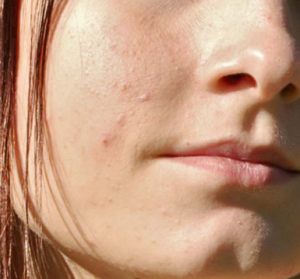August 10, 2016
By Lisette Hilton / Dermatology Times
While pediatric atopic dermatitis and acne have some similarities among skin of color and lighter-skin children, there are important differences when these common skin conditions affect darker skin types, according to Nanette Silverberg, M.D., clinical professor of dermatology and pediatrics, Icahn School of Medicine at Mount Sinai and chief, pediatric dermatology, Mount Sinai Health System.
Starting with eczema
Atopic dermatitis is the most common skin condition of childhood and affects about 25 percent of children in the U.S., according to Dr. Silverberg, who presented on the topic at The Skin of Color Seminar Series, held earlier this year in New York City.
“In particular, there have been studies that have shown atopic dermatitis is more common in children of African American descent or of Afro-Caribbean descent,” she says. “It certainly represents a very concerning issue in children of color.”
Differences in atopic dermatitis can occur in the presentation and severity among children of color.
“In somebody who is very light skinned, eczema is going to be red. But in children of color, we see much less erythema. We see much more in the way of lichenification, or thickening of the skin, and more follicular prominence. These are particularly vexing types of eczema, in that the lichenification, or lichenoid, type of dermatitis is often very thick and very itchy. And the follicular type can be quite deceptive. You don’t see redness. You don’t necessarily see thick or oozing skin, but it is incredibly itchy and it significantly affects children psychologically,” Dr. Silverberg says.
One of the major issues with treating children of color is that there are differences biologically, in terms of the basis of atopic dermatitis, according to the dermatologist.
In African American children, it has been demonstrated that there are reductions in ceramide content, and that could be the reason the skin barrier is not working as effectively as it should be. In children who are Caucasian of European descent, eczema is more associated with a filaggrin defect, she says.
“Filaggrin defects, particularly in Asian children, are somewhat different than those noted in Caucasian children, so we know there are some reasons biologically that the kids may be a little different,” Dr. Silverberg says.
As a result, dermatologists treating children of color who have eczema often need to use thicker emollients, including emollients that might have extra ceramide content or extra balanced fat content to enhance the skin barrier.
“We’re still moving forward to see whether the biologic basis of eczema affects how children respond to treatment. In atopic dermatitis, many of the kids with atopic dermatitis will manifest in early childhood with a lot of hypopigmentation or lightness of the skin. So, pigmentary alterations, which we see in kids of color, are temporary but are sometimes very noticeable and can concern parents,” Dr. Silverberg says. “But this generally resolves, and that’s something we can reassure parents about.”
Acne
Acne is common and comes with different concerns in children with skin of color.
“Whereas many of our Caucasian patients talk about the actual pimple lesions, most of our African American patients and many of our Hispanic and Asian patients will obsess over post-inflammatory pigmentary alterations after their acne clears,” Dr. Silverberg says. “So, there’s a focus in the skin of color acne patients, even in the teenagers, on specifically pigmentation issues.”
Hispanic pediatric patients tend to have the most severe acne types among children of skin of color, Dr. Silverberg says.
“We don’t see as much in the way of cystic acne in African American patients, historically and in the literature,” she says. “So, the population that we tend to focus on for more severe treatment or treatment, like isotretinoin, are usually Hispanic teenagers. It’s an important consideration because they have some tendency to have the cystic component, although you can see it in everybody, it seems to be the most concerning amongst that population in the teenage years.”
Dermatologists treating these children need to pay special attention to communicating the need for using good sun protection to enhance pigmentation returning properly. It’s also important to work with patients to develop a skincare regimen that’s effective both at clearing current lesions and preventing new lesions, so the pigmentation improves over time, according to Dr. Silverberg.
“There are some wonderful new acne guidelines that have come out recently from the American Academy of Dermatology … saying it’s clear that most patients of color will respond quite nicely to the products we have available, including topical retinoids … as well as azelaic acid, which has been demonstrated to be beneficial in improving both tone and skin lesions,” she says.




Recent Comments